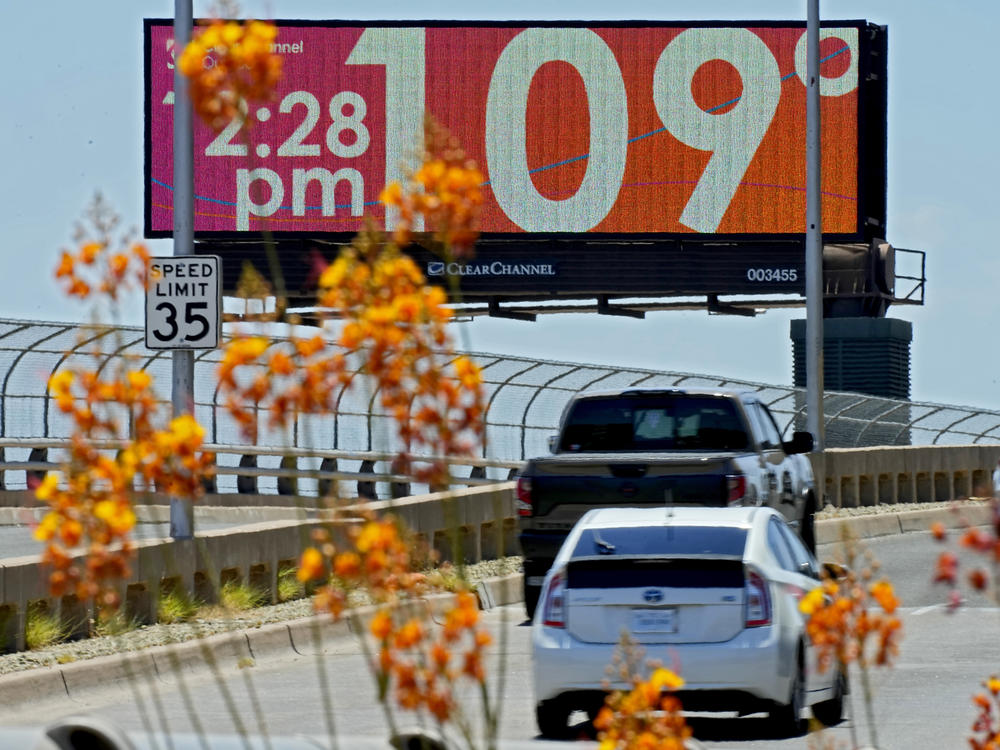Section Branding
Header Content
Forecasters say Southwest temperatures to ease some with arrival of monsoon rains
Primary Content
PHOENIX — A historic heat wave that turned the U.S. Southwest into a blast furnace throughout July is beginning to abate with the late arrival of monsoon rains.
Forecasters expect that by Monday at the latest, people in metro Phoenix will begin seeing high temperatures under 110 degrees Fahrenheit (43.3 degrees Celsius) for the first time in a month. As of Friday, the high temperature in the desert city had been at or above that mark for 29 consecutive days.
Already this week, the overnight low at Phoenix Sky Harbor International Airport fell under 90 (32.2 C) for the first time in 16 days, finally allowing people some respite from the stifling heat once the sun goes down.
Temperatures are also expected to ease in Las Vegas, Albuquerque and Death Valley, California.
The downward trend started Wednesday night, when Phoenix saw its first major monsoon storm since the traditional start of the season on June 15. While more than half of the greater Phoenix area saw no rainfall from that storm, some eastern suburbs were pummeled by high winds, swirling dust and localized downfalls of up to an inch (2.5 centimeters) of precipitation.
Storms gradually increasing in strength are expected over the weekend.
Scientists calculate that July will prove to be the hottest globally on record and perhaps the warmest human civilization has seen. The extreme heat is now hitting the eastern part of the U.S, as soaring temperatures moved from the Midwest into the Northeast and Mid-Atlantic, where some places are seeing their warmest days so far this year.
The new heat records being set this summer are just some of the extreme weather being seen around the U.S. this month, such as flash floods in Pennsylvania and parts of the Northeast.
And while relief may be on the way for the Southwest, for now it's still dangerously hot. Phoenix's high temperature reached 116 (46.7 C) Friday afternoon, which is far above the average temperature of 106 (41.1 C).
"Anyone can be at risk outside in this record heat," the fire department in Goodyear, a Phoenix suburb, warned residents on social media while offering ideas to stay safe.
For many people such as older adults, those with health issues and those without access to air conditioning, the heat can be dangerous or even deadly.
Maricopa County, the most populous in Arizona and home to Phoenix, reported this week that its public health department had confirmed 25 heat-associated deaths this year as of July 21, with 249 more under investigation.
Results from toxicological tests that can takes weeks or months after an autopsy is conducted could eventually result in many deaths listed as under investigation as heat associated being changed to confirmed.
Maricopa County confirmed 425 heat-associated deaths last year, and more than half of them occurred in July.
Elsewhere in Arizona next week, the agricultural desert community of Yuma is expecting highs ranging from 104 to 112 (40 C to 44.4 C) and Tucson is looking at highs ranging from 99 to 111 (37.2 C to 43.9 C).
The highs in Las Vegas are forecast to slip as low as 94 (34.4 C) next Tuesday after a long spell of highs above 110 (43.3 C). Death Valley, which hit 128 (53.3 C) in mid-July, will cool as well, though only to a still blistering hot 116 (46.7 C).
In New Mexico, the highs in Albuquerque next week are expected to be in the mid to high 90s (around 35 C), with party cloudy skies.
Copyright 2023 NPR. To see more, visit https://www.npr.org.

